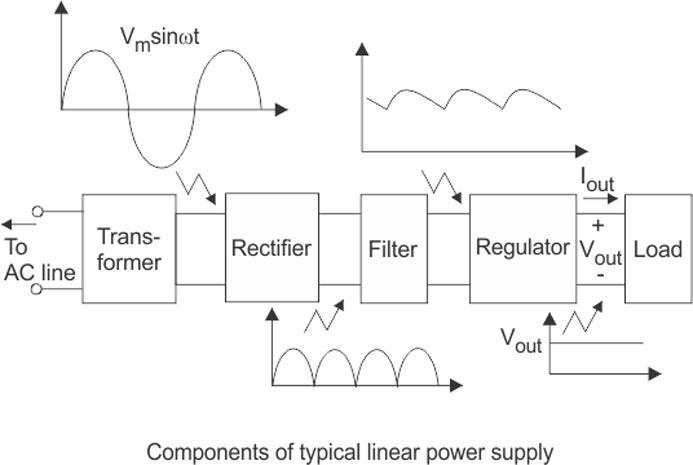What is Power Supply Regulation?
Power supply regulation is the ability of a power supply to maintain an output voltage within a specified tolerance as referenced to changing conditions of input voltage and/or load.
Most electronic equipment is powered from DC voltage derived from the unregulated AC mains voltage. A rectifier circuit converts the AC to DC which is then conditioned to meet the circuit or load requirements.
The rectified voltage follows the AC input and will vary as the mains vary. The variations may affect the circuit performance and is undesirable in sensitive equipment such as computers, sensor and precision circuits. In addition, components and circuits will only operate or perform efficiently when the power supply is within a certain limit. Anything beyond the design limit will either destroy the components and equipment or be insufficient to power the equipment such that it will not turn on or simply malfunction.
The mains supply voltage is usually supposed to remain within certain limits and most equipment are designed o accommodates these. However, these variations, sometimes beyond limits, may cause problems in the sensitive equipment since they will cause variations in the output voltage of the power supply.
Controlling the voltage variations are beyond the control of the equipment manufacturer and the consumer. For this reason, the best the designers can do is to ensure that the power supply output voltage remains fairly constant over a wide range of input voltages.
A power supply with regulation provides an output that remains constant irrespective of variations in the input mains voltage. A typical power supply unit consists of several blocks depending on the design and stability required. A simple linear supply will have a transformer, rectifier, filter and a regulator. A switched mode supply contains the four building blocks and additional blocks such as the inverters and feedback stages.

Figure 1: Basic diagram block diagram of a linear power supply with regulation – Image Credit
In a regulated power supply, the input to the regulating device is usually higher than expected output. This allows the circuit to work with a wide range of input voltages while giving out a constant output. The regulating device is usually in series with the output. And since the input is always higher than expected output, the device or circuit works in a way that a certain amount of voltage is dropped across the regulating circuit.
Even with a low input AC voltage, the regulating circuit must receive a higher voltage; however, in this case, a small amount of voltage is dropped. If the input AC is very high, the regulating circuit drops a higher voltage. In switched power supplies, the regulation is achieved by varying the switching of the series transistor.
There are different forms of regulating circuits, the type varies with the power supply design and required level of stability. Typical regulating components include Zener diodes, series transistors or switching devices, and fixed and reliable integrated circuit regulators.
There are also some situations where consumers use automatic voltage regulators to condition the AC input voltage so that it remains within a specified limit. Some of these have bulky transformers and may not be practical in some cases due to cost, convenience and other factors.